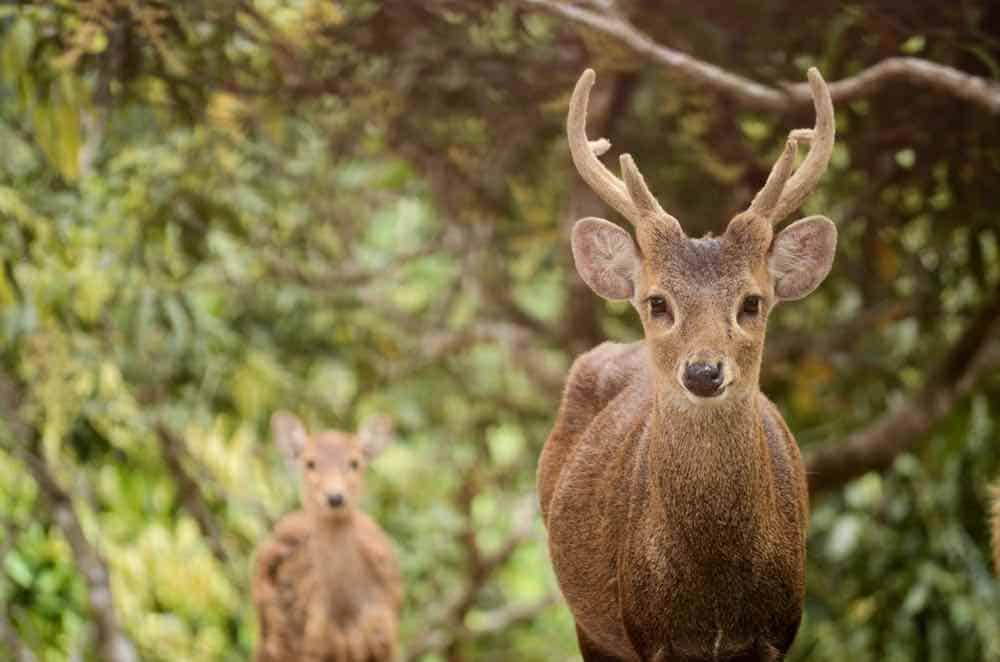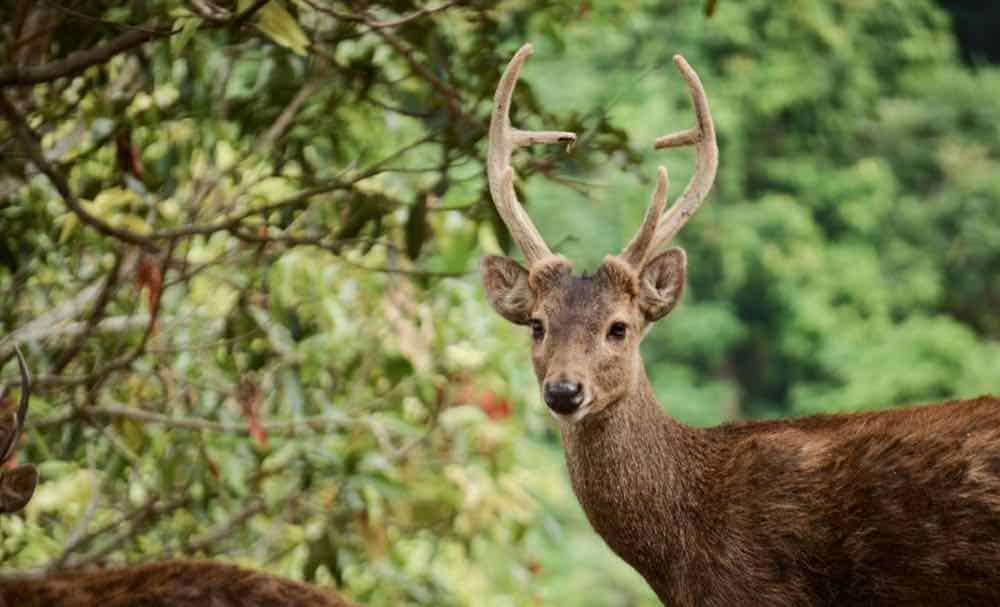One of the less well-known species of deer around the world today, the Bawean Deer is nevertheless a memorable mammal once you get to know about them! Their tenacity for ongoing survival despite the struggles they face make this a truly remarkable breed of deer.

Read on to learn all of the key facts about this deer—from where they live, to how they impact their environment, to the hunting regulations around them and the status of this deer species today!
History and Origins of the Bawean Deer
The Bawean Deer, which is also known by the names Kuhl’s Hog Deer and Bawean Hog Deer, has its origins on the Indonesian island of Bawean. Closely related to, but remaining distinct from, the more widely-known Indonesian Hog Deer, this species of deer was first documented as an indigenous species on the island of Bawean and classified in the 1800s. It has since been a bred of deer kept on close watch by conservationists and the Indonesian government in order to preserve its livelihood and ensure its continued presence on the island.
The Bawean Deer is demarcated from other hog deer mostly by its size. These deer are on the smaller scale overall, with a notably smaller head than the Indian Hog Deer. Their coloring can range from light to a much darker brown, with paler coloring around the chin, throat, and eyes. This species of deer also possesses a long, bushy tail with a distinctive white underside. Their antlers also tend to be shorter than those of the Indian Hog Deer and sprout up to three tines.
Where Are Bawean Deer Indigenous?

This species of deer is indigenous to the island of Bawean off the coast of Indonesia, and to this day, that is where the vast majority of its population can be found. Bawean Deer are not typically found in zoos, nor are they an invasive breed of deer to other regions of the world.
Environmental Impact of the Bawean Deer
Forest Life
The Bawean Deer is a nocturnal and crepuscular mammal. It tends to bed down and rest during the heat of the day inside the denser parts of the Bawean forest and in the thick foliage of the uplands, emerging around sunset into the forest meadows and fields where the deer then engage in grazing, mating, fighting, and other typical deer behavior.
However, unlike many other subspecies of deer which tend to travel and graze in larger herds, Bawean Deer are notably solitary creatures, coming together for mating and sparring purposes and otherwise remaining in smaller groups of one or two males, a female, and an infant. In terms of communication, this species of deer communicate with one another via a low, barking call; males also are known to spray liberally when their small herd or their territory is threatened, and they are notably aggressive even by the standards of bucks the world over.
This species of deer comes into heat in the late summer months of August and September and into October, and they carry through a gestational term of anywhere from 180-230 days (into the late winter and following spring; calving tends to take place anywhere from February into May). The female deer will only give birth to a single fawn at a time, and the small group will work together to protect the fawn as it grows.
Food Chain
The Bawean Deer is an herbivore, subsisting on a diet of herbs, leaves, local corn crops, grass, twigs, and even cassava plant leaves. It has few natural predators on the island of Bawean, its only true natural enemies being noted as indigenous birds of prey, and certain varieties of large snakes such as pythons. Even then, these are generally a greater threat to fawns than to fully grown deer.
Helpful or Harmful to Its Environment?
The Bawean Deer is naturally a great asset to its environment. As an herbivore and ruminant, its presence on the island of Bawean helps to maintain the natural ecosystem, limiting overgrowth of plant life as it grazes and helping to sustain the ecological balance of its surroundings simply by doing what it does best—being a deer!
Can You Hunt and Eat Bawean Deer?

Even if one was to travel all the way to the island of Bawean in the hopes of hunting and sampling the meat of this particular deer, they would quickly find themselves disappointed.
The Bawean Deer is not a breed that can be legally hunted or killed. In the year 1977, when it came to broader attention that the population of this particular deer species was rapidly declining, the government of Indonesia placed into effect a bill that classifies them as an endangered species; because of this, absolutely no hunting, trapping, or killing of this breed of deer is permitted.
Struggles Facing the Bawean Deer Population
As industry continues to plow forward, the Bawean Deer—despite having very few natural predators among its fellow animals—has been placed on critically endangered status. This is owed in large part to habitat loss, an already small sized population from which to reproduce, and also the limited size of the island of Bawean itself, which means there is less grazing and living space to go around. This has become particularly problematic as more and more of this deer’s natural home within the forests and woodlands on the island are leveled to make way for farmland.
Another factor that has caused an ongoing struggle within the Bawean Deer population is the perpetually changing climate in Indonesia, which has taxed the land itself and created more hardship in terms of grazing and other natural resources necessary for the sustenance of this particular deer population.
Nevertheless, thanks to the concentrated efforts of the Indonesian government and several animal conservation groups, the population of these deer has been on a steady incline since the government passed the endanger species codification for this species. There is great hope that, with continued work to preserve these animals and their natural habitat, this species of deer will continue to live and increasingly thrive on the island of Bawean for generations to come.
Wrapping up on the Bawean Deer
We hope you enjoyed learning more about the Bawean Deer! Check out the rest of our website for information on all sorts of deer breeds and the unique part they play in the environment, ecology, and the balance of hunting and conservation around the world.
If you want to learn more about other types of deer, check our Deer Resources page.
